4 Day Adventure Trekking For Orangutans In Borneo With Teens (2024)
Last Updated on March 13, 2024 by Nicole
When I heard about an adventure that involved staying in the jungle and trekking to try and find endangered orangutans in Borneo, I couldn’t book it fast enough. My family of six (with 3 teenagers between the ages of 13 and 16 years old) spent four days exploring the jungle in Tanjung National Park in Borneo by boat and on foot looking for these majestic creatures. We had a naturalist guide who led us on this incredible journey discovering organutans and other amazing wildlife in this untouched and remarkable part of the world. Our teens absolutely loved it. Here is our planning guide and 4 day itinerary in Borneo with our teens.
This post may contain affiliate links. That means that I may earn a small commission, at no extra cost to you, if you buy something through my site. This helps me run my website and produce the articles that I hope you find helpful.
At A Glance
I know you are busy. If you only have a couple minutes to spare, here are the key takeaways from this article.
- Orangutans can be found in the jungles of Borneo.
- Borneo is divided into 3 countries; Malaysia, the Kingdom of Brunei, and Indonesia.
- You can trek wild and habituated orangutans on foot or by boat in Kalimantan, the Indonesian part of Borneo.
- In addition to orangutans, there is a phenomenal amount of wildlife to see, including 7 different kinds of monkeys, crocodiles, and hundreds of birds.
- You can also visit remote villages and learn about the local’s lives, and help with their reforestation efforts.
- You can stay at the Rimba Orangutan Ecolodge, or stay on a boat, called a Klotok.
If you can find more time, try to read my full article. It explains my suggestions, gives you details about experiences that you will have, and provides travel tips.

Borneo
Borneo is the third largest island in the world and the largest in Asia. The island itself is divided up and ruled by three countries: Malaysia and Brunei in the north, and Indonesia to the south. The Indonesian part of Borneo is called Kalimantan.

Tanjung Punting National Park
Tanjung Punting National Park is the largest and most diverse protected example of coastal tropical heath and peat swamp forest in the world. It contains 3,040 km² (or 1,174 square miles) of low lying swampy terrain and rivers which flow into the Java Sea.
Its’ phenomenal eco-diversity creates multiple zones of different plant life providing microhabitats for plants and animals. The net effect is that many species exist and live in close proximity to one another in Tanjung Punting National Park which is not possible anywhere else in the world.
Wild life in Tanjung Punting National Park
Tanjung Punting National Park has remarkable animal life. There are:
- hundreds of bird species,
- 9 primates, including the bizarre looking proboscis monkey and the endangered orangutan
- two species of crocodiles;
- dozens of snakes, butterflies and moths; and
- other animals, such as clouded leopards, civets, and multiple species of deer.
In 1935, the area was declared a game reserve and in 1982, a national park.

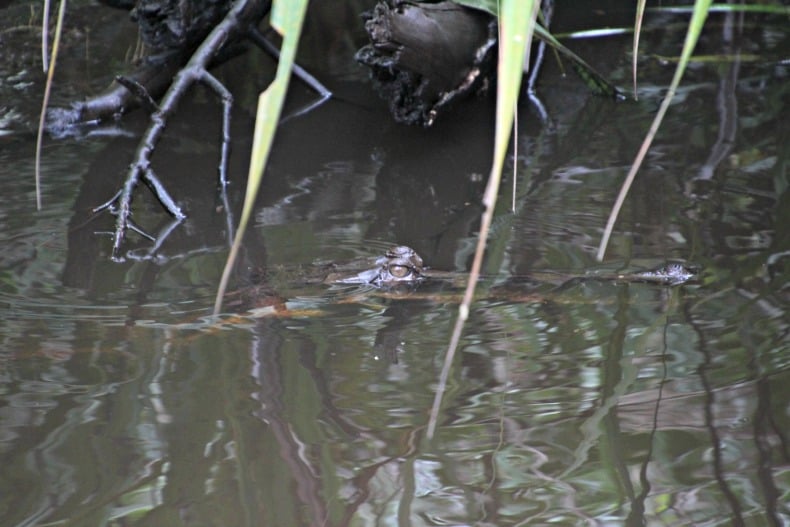


Planning Guide For Trekking Orangutans in Borneo
The great news about Indonesia is there are a lot of local airlines offering ridiculously inexpensive flights all over Indonesia. That’s a relief when you realize that Indonesia is made up of 15,000 islands (or more). The bad news is twofold.
Questionable safety record
First, except for Garuda, Indonesia’s national airline, Indonesia’s aviation industry does not have a stellar safety record. In fact, many Indonesian airlines have some of the worst safety records in the world.
Difficult to fly direct
Second, it seems to be difficult to get anywhere directly. Case in point, we were in Ende on Flores Island (after hiking up Kelimutu Volcano to watch the sunrise) and needed to get to Pangkalan Bun on Borneo to transfer to Tanjung Punting National Park. Consequently, we had to fly 1 1/2 hours from Ende to Labuan Bajo on Flores, then, fly 2 more hours from Labuan Bajo to Bali.
You can either spend a few days in Bali or keep going. We kept going although we had to spend the night in Bali to catch the next set of flights.
The next morning, we flew 1 hour from Bali to Surbaya on Java Island, changed planes, and then flew another 1 1/2 hours to Pangkalan Bun.
There was no way to get from Ende to Pangkalan Bun in one day. So, in essence, it took us 24 hours to get someplace where, had there been a direct flight, it would have taken about 2 hours!
Anyways, I would do it all again…no question.
Other Important Resources
If you are looking for more information about our trip to Indonesia, please check out the following:
- A Mind Blowing 17 Day Adventure In Indonesia With Teens;
- Best 3 Day Adventure In Komodo National Park With Teens;
- Best 3 Day Itinerary Exploring Kelimutu And Its Villages With Teens;
- 4 Day Adventure Trekking For Orangutans In Borneo With Teens; and
- 5 Day Itinerary Of Yogyakarta With Teens (+Planning Guide).
Day One: Travelling To Rimba Orangutan Ecolodge
Once we landed in Pangkalan Bun in Kalimantan, we were collected at the airport by employees of Rimba Orangutan Ecolodge, the lodge where we were staying. Then, we drove around 20 minutes from the airport to the Port of Kumai.
This was a very ugly town on the Java Sea whose main purpose was to produce “bird’s nest”, an extremely expensive ingredient/delicacy used mostly by the Chinese.
Bird’s nest is the hardened saliva of the Swiftlet bird. It is used most famously in bird’s nest soup, but is also an active ingredient in several Chinese medicines.
On the edge of the water, there were multiple concrete buildings, some 10 stories high, with hundreds of holes cut into the sides. Thousands of birds flew in and out of these holes all day long.
We were told that the rooms inside were dark and set up to encourage the birds to spend time so that the saliva would drip and then, get collected.
In town, the sound of chirping birds was almost deafening, but not because of the birds themselves. The town amplified recordings of the birds in order to attract them.
The whole thing was a little bizarre.
Our River Boat In Borneo
From the port, we boarded a traditional Indonesian river boat called a Klotok. This was our own private boat for our 4 day Borneo adventure with our teens.
On top, we had a large dining room table at the back, and six wicker chairs stationed towards the front. Most of the upper deck had a roof to protect us from the sun.
However, apart from this roof, the boat was wide open with fantastic views. We had our own naturalist guide and another 6-8 staff that remained with us on the boat for our whole Borneo vacation. They made meals, provided snacks, helped spot wildlife, and carried extra water and other supplies when we hiked in the jungle. We felt very spoilt.

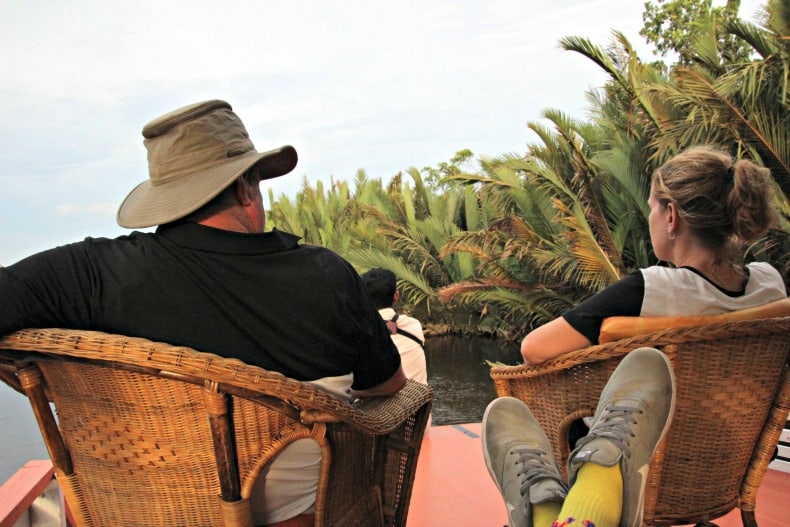
Download my personally crafted 17 day Indonesia travel guide with my hotel and restaurant recommendations, tours and activities that I enjoyed.
The River Journey Into Tanjung Punting National Park
We boated about 30 minutes on the Java Sea from the port. Then, we reached the mouth of the Sekonyer River. This river was very narrow, especially compared to the Java Sea, and we could easily see the shores and the jungle.

We boated for another 1 1/2 hours before we reached our lodge, barely seeing another boat or person along our way. It seemed uninhabited, but we later learned that small villages were sometimes nestled behind the shores and the jungle on the opposite side to Tanjung Punting National Park.

Our our journey, our naturalist guide immediately started spotting animals. Over our short trip to Rimba Orangutan Ecolodge, we saw three different kinds of monkeys playing in the jungle by the river – Silver Langurs, Prosbiscus and Long Tail Macaques. We all loved the ride.

Accommodation While Trekking For Orangutans
We stayed at Rimba Orangutan Ecolodge. It was very cool and sat at the edge of Tanjung Punting National Park. It was built in a series of adjoining elevated pavilions, with boardwalks connecting all the buildings and access to the river. It was one level, solely made out of timber and run by solar energy. Rimba Orangutan Ecolodge was surrounded by jungle and wildlife.

The Facilities At Rimba Orangutan Ecolodge
The facilities at Rimba Orangutan Ecolodge were simple but comfortable. The bedrooms were large and clean. Our rooms had air conditioning, fans and lots of hot water. We dined in a separate building that was divided into a dining hall and a large recreation room with ping pong, pool, couches and a movie screen. Wifi was very spotty.
Each night, we fell asleep to the chatter of monkeys in the jungle. Each morning, we woke up to the thumping of monkeys jumping on our roof, a startling but pretty cool way to start the day.

Food and Cost At Rimba Orangutan Ecolodge
We either ate at Rimba Orangutan Ecolodge or on the boat, depending on the day’s schedule. The food was simple, healthy, plentiful, and served family style.
Our stay at the Rimba Orangutan Ecolodge was all inclusive. We paid one fee per person and everything was included – our accommodation, meals, transportation, tours, and guiding services.
One caution… no alcohol was offered. You were welcome to bring your own, but it was illegal for the lodge to serve us any.
Day 2: Our First Encounter With Orangutans In Borneo
We woke up early on our second day, had breakfast and hopped on our boat. We boated up the Sekonyer River for about 1 1/2 hours going deep into the jungle in Tanjung Punting National Park.
I couldn’t believe my eyes – monkeys were everywhere! In addition, our naturalist guide spotted dozens of birds, including Storm’s Storks, one of the rarest birds in the world, and Tomistominae, a fresh water crocodile.

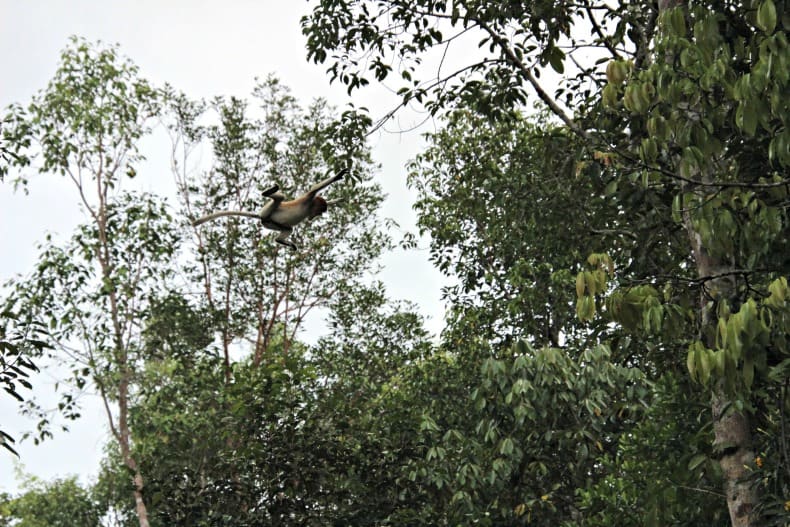
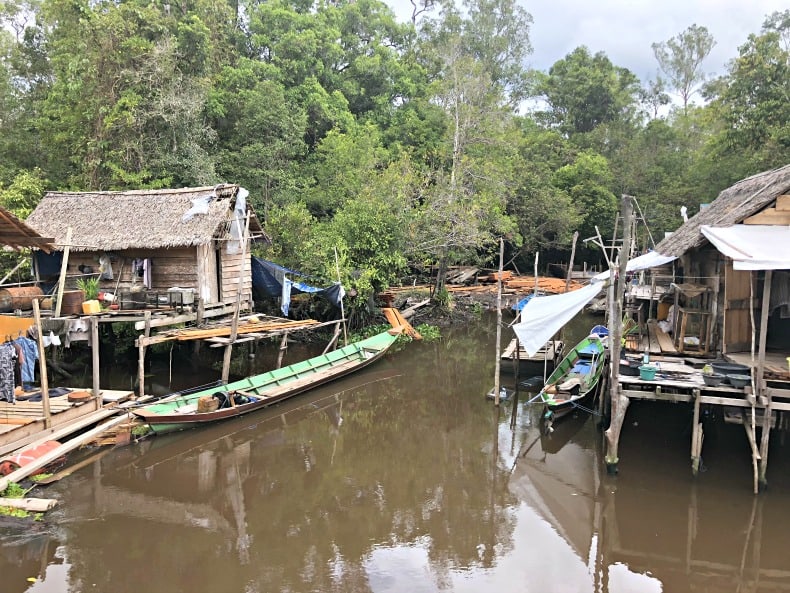
After 1 1/2 hours, we turned onto a very narrow river. This river was barely wide enough for two klotoks to pass each other. We headed up this river for another 30 minutes towards our ultimate destination, Camp Leakey.
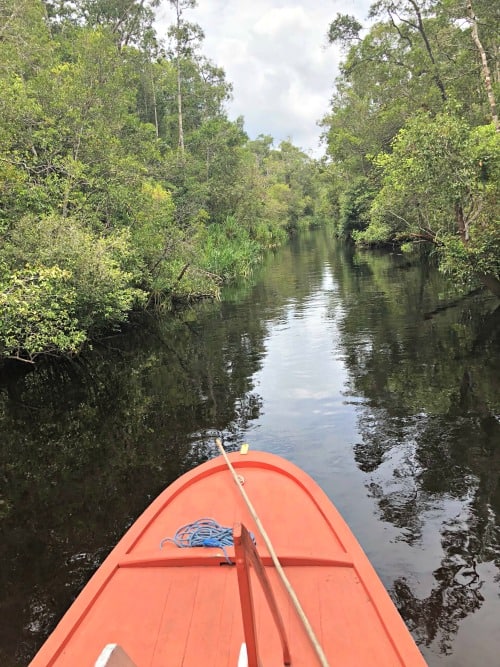
Camp Leakey
Camp Leakey was established in 1971 by Dr. Galdikas. She named it after Louis Leakey, who mentored and inspired her to spend her life studying orangutans in their natural habitats.
He also influenced two other famous women in their primate studies. First, Dr. Jane Goodall, who is considered to be the world’s foremost expert on chimpanzees. She studied them in Tanzania. Second, Dr. Dian Fossey, who studied mountain gorillas in Rwanda. He personally chose these three female researchers and called them The Trimates.
After our boat docked, we walked into the jungle for approximately 45 minutes to Camp Leakey.
Once upon a time, Camp Leakey was only a couple of huts. Now, there is a series of wooden structures where scientists and students from all over the world come to conduct research of various kinds.
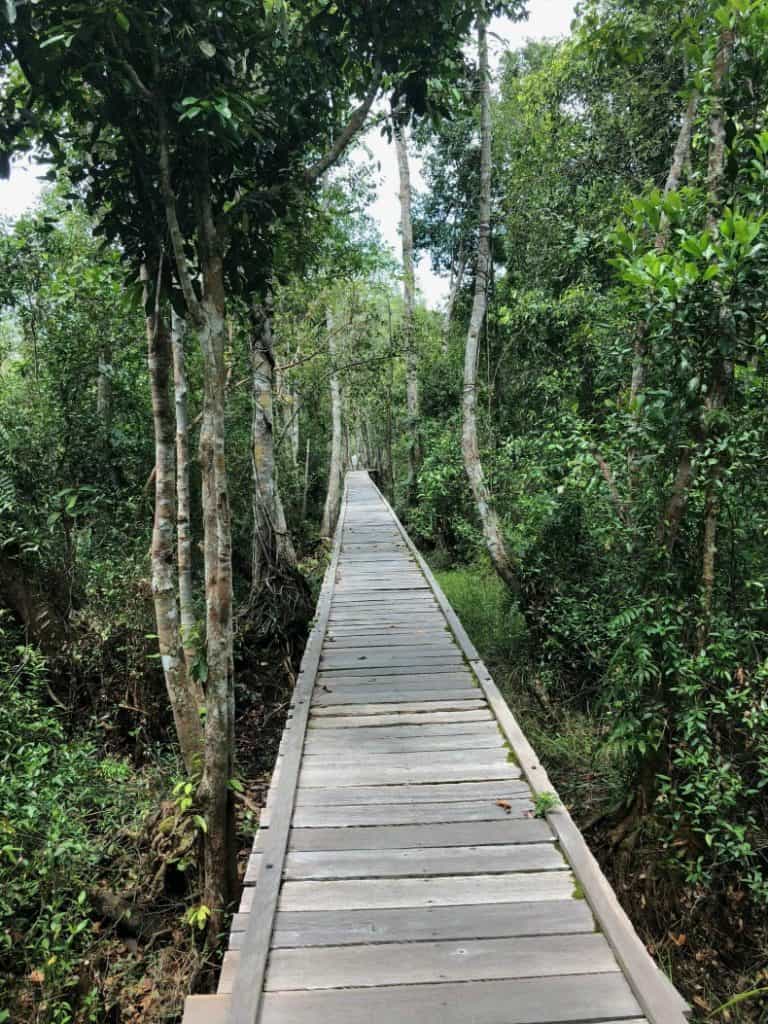
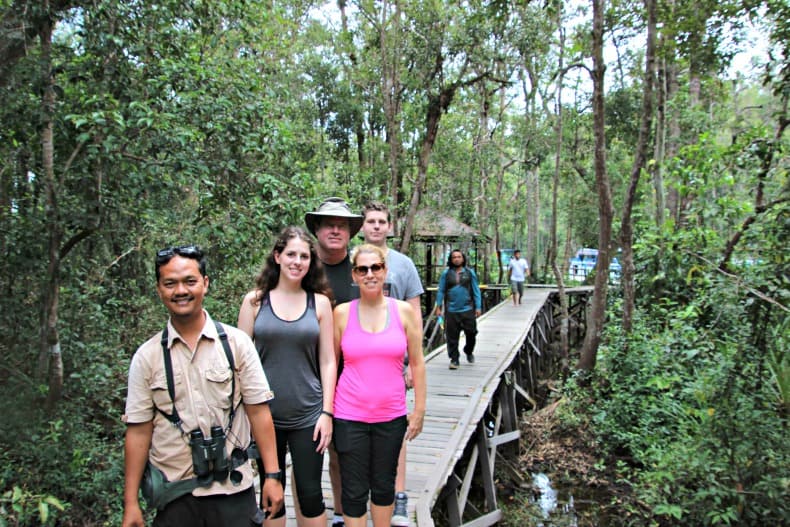
Camp Leakey also offers an Education Centre for tourists. We spent about 45 minutes there and learnt about the lives of some of the orangutans that have been the focus of its scientific studies since 1971. It was fascinating.
The Feeding Centre At Camp Leakey
From camp, we walked another 20 minutes into the jungle to a feeding centre. The feeding centre is a simple large wooden platform raised above the ground with three or four stairs in front of it.
Once a day, park rangers spread dozens and dozens of bananas on top of the platform and then, loudly call out, announcing to any orangutans nearby that there is food. Visitors stand or sit in simple benches about 50 ft or 15m away behind two thin ropes, waiting and watching
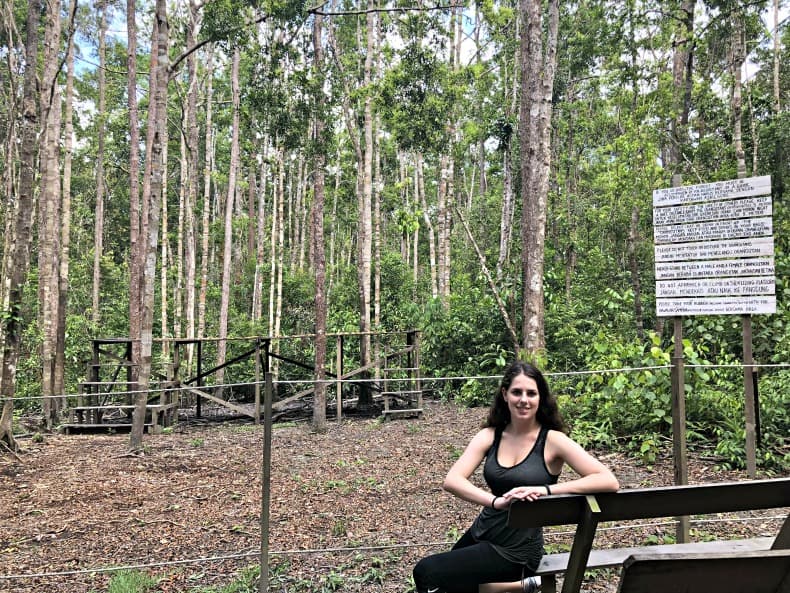
The number of orangutans who come to feed each day is unpredictable. There isn’t any fencing around Camp Leakey or around Tanjung Punting National Park. The orangutans are free to come and go as they please.
In our case, we visited in late March when fruit had already started to fully ripen along the river. Accordingly, unlike other times a year, only a few orangutans took advantage of the free bananas. But what a sight!
Watching the Orangutans At Camp Leakey
We watched them swing through the jungle as they came towards the platform – two females, one with a baby. We watched them eat and play, the baby never being more than an arm’s reach away from the mom.
One orangutan clearly had this all figured out. She stuffed about 10 bananas into her mouth and climbed to the top of a large tree. She then sat at the top, peeled every single one, threw the peels to the ground, smushed them all together and finally, shoved them all into her mouth. It was hilarious.
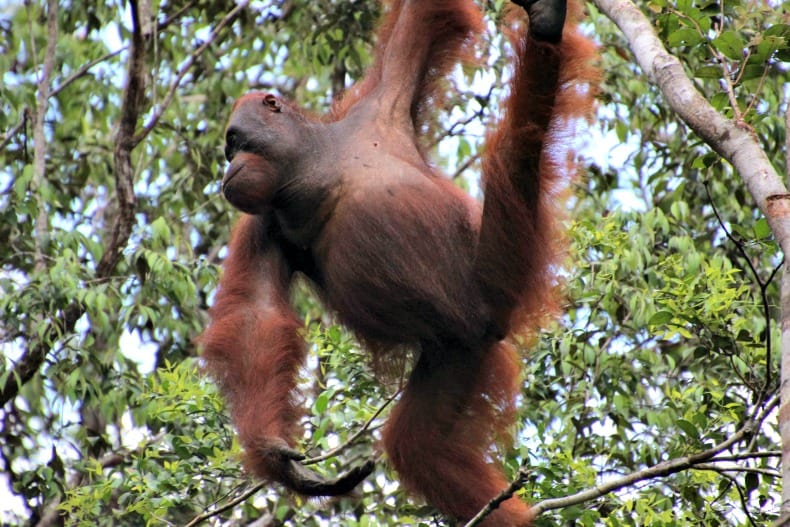
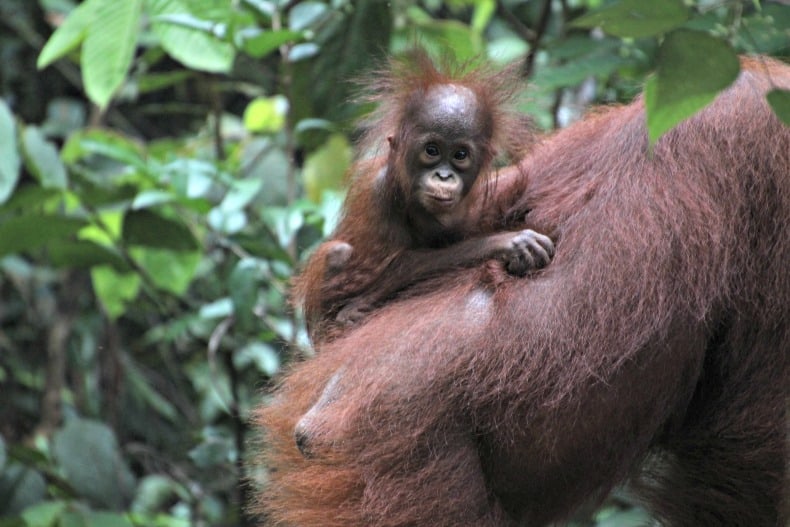

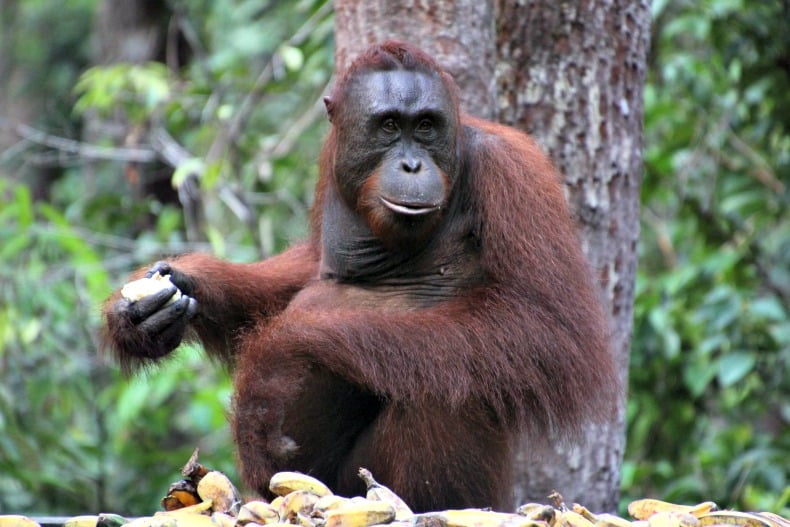

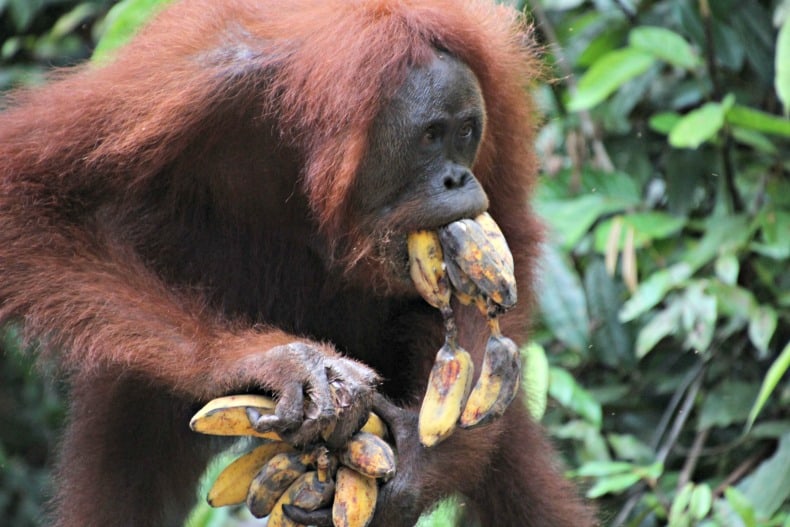
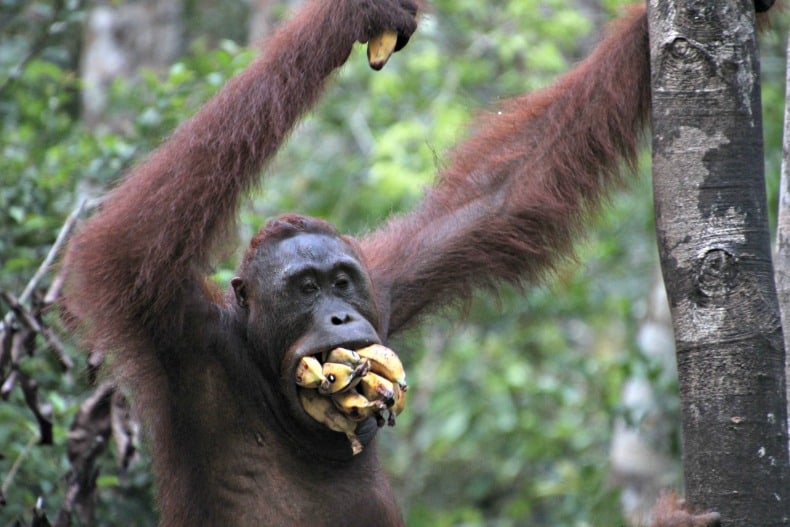
The Alpha Male At Camp Leakey
Then, an uncomfortable silence fell around us. People to the right of where we were standing started to back up slowly. We looked over and were stunned to see the Alpha male standing there.
Somehow, this enormous 250 lbs (114 kg) muscled creature had crept up behind our small group and stood mere feet from us. There was nothing between this enormous male, me, and my kids. We were not sure what was going to happen next.
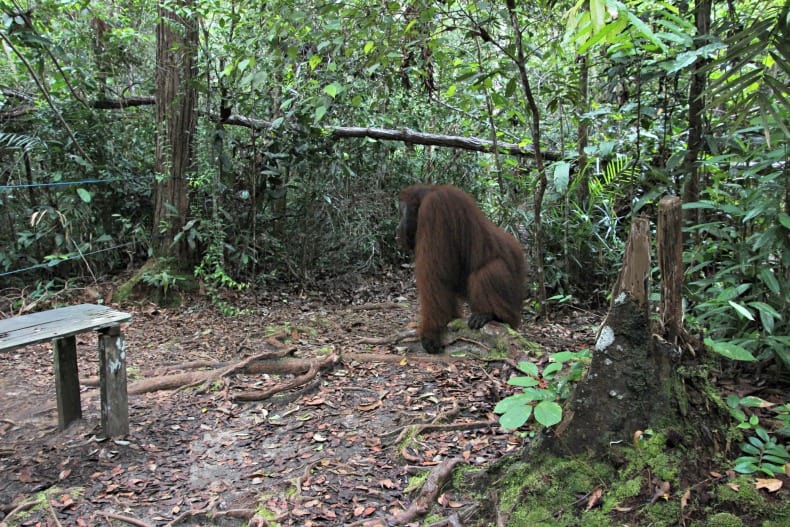
He stood motionless barely looking at us for about 5 minutes. Eventually, seemingly when he was satisfied that we had given him the respect and space that he deserved, he very leisurely walked to the platform.
From then on, he kept his back to us the whole time, almost knowing that all anyone wanted was a photo of his unbelievable face. We managed to click off a few photos, but it was incredible how this creature totally controlled the encounter.
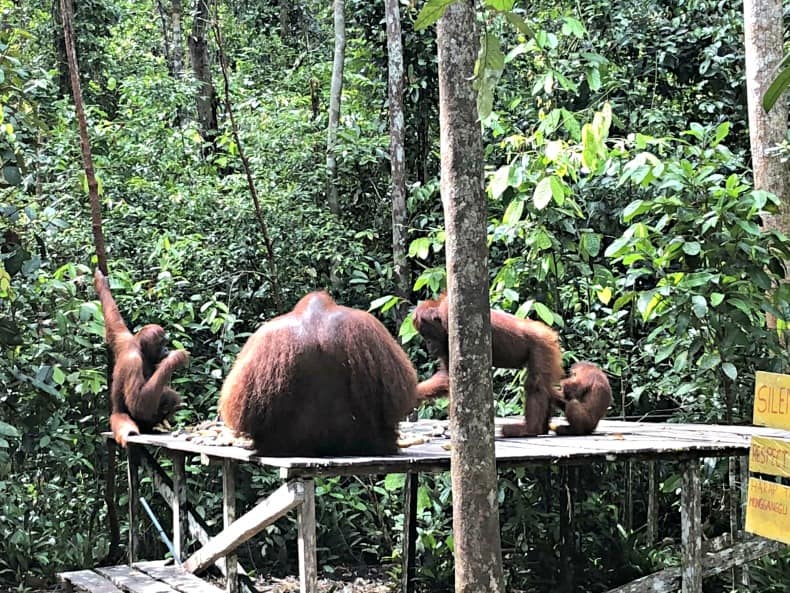

Return to the Rimba Orangutan EcoLodge
On our return back to Rimba Orangutan Ecolodge, we spotted two “wild” Borneo orangutans on the shores of the river. Apparently, this is unusual, but not unheard of in spring when the fruit is ripening along the river shores. However, we were confused. If these orangutans were considered wild, what did we just experience at Camp Leakey?
Wild vs. Habituated Orangutans In Borneo
Apparently, the orangutans that go to the Feeding Centre at Camp Leaky (and other feeding stations in Tanjung Punting National Park) are considered “semi-wild” or habituated not “wild”, because they have come into contact with humans at some point in their lives and are not afraid of them. Although they are not friendly with humans, they are also not shy like wild orangutans.
Many of the habituated orangutans were rescued as babies from people’s homes where they were kept as pets; or their mothers were killed in the deforestation of areas where they used to live.
Others have grown accustomed to the scientist and students from Camp Leakey and other rehabilitation centres observing them and have accepted them as part of their environment.
However, the ones that we spotted along the shores of the river as we returned from Camp Leakey were on the other side of the river, not in Tanjung Punting National Park. They were wild, very shy, and tried to hide in the jungle as we passed.
It was amazing to watch these wild creatures that are normally hidden. In addition, it was incredible to see orangutans, who are very much endangered, still surviving outside Tanjung Punting.
Download my personally crafted 17 day Indonesia travel guide with my hotel and restaurant recommendations, tours and activities that I enjoyed.
Day 3: More Orangutans, A Local Village, And Lightning Bugs
On the morning of day 3 of our Borneo holiday with our teens, we went to two orangutan rehabilitation centres and feeding stations called Tanjung Harapan and Pondok Tanggui.
They were much closer to our Lodge than Camp Leakey, but offered similar experiences – a 30 to 45 minute hike into the jungle to a large platform set away from the visitors, and park rangers leaving bananas for any orangutans that wanted to come and enjoy them.
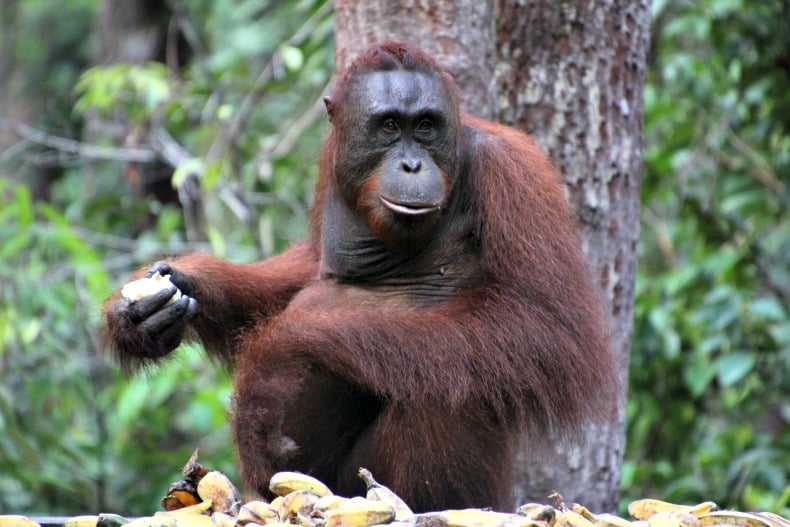
We loved the walks and hearing from our naturalist guide about the various plants and bugs that we spotted along the way.
We never knew how many orangutans would show up, or what they would do (whether we would have another close encounter or not).
It was lots and lots of fun to simply sit back and watch events unfold. Nothing was as exciting as the first day encounter with the two females, the baby and the alpha male, but it was still fascinating to be there and watch these wonderful animals.
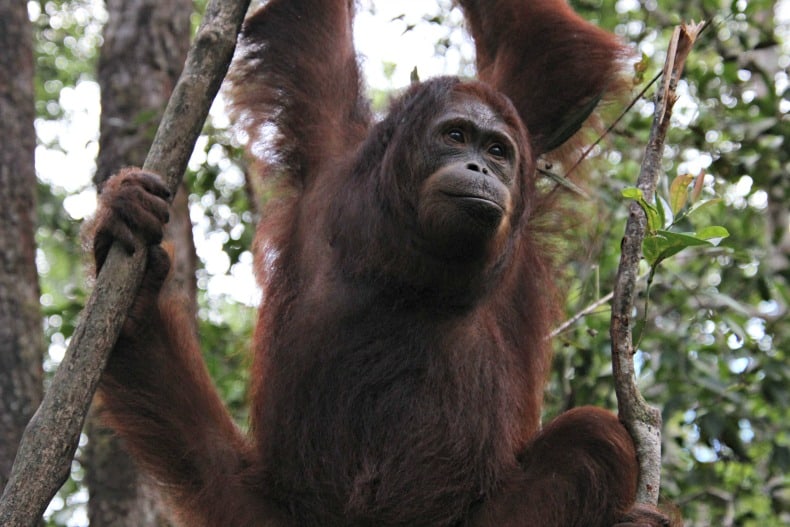
Pesalat Re-forestation Centre
In addition to visiting two orangutan rehabilitation centres, we also planted trees at the Pesalat Re-Forestation Centre through the Friends of the National Park Foundation.
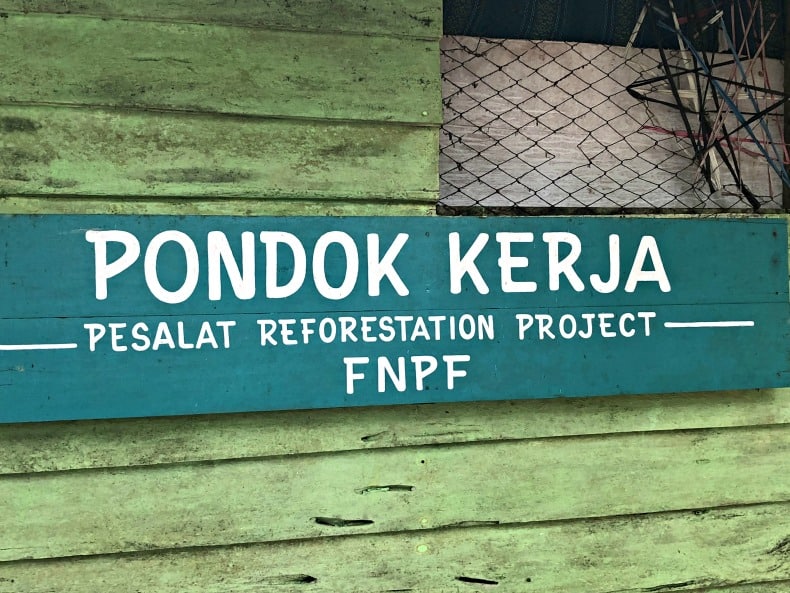
Reforestation is trying to address two significant problems in the National Park.
First, prior to the National Park being formed, a lot of the trees were slashed and burned to make way for traditional farming. This type of farming created problems with the soil and for natural tree growth to occur.
Second, in 2006, a major fire severely burned parts of the National Park. Today, the park rangers continue to plant new trees, remove dangerously dry or dead plants and trees to reduce the risk of another fire, and maintain the overall park infrastructure.
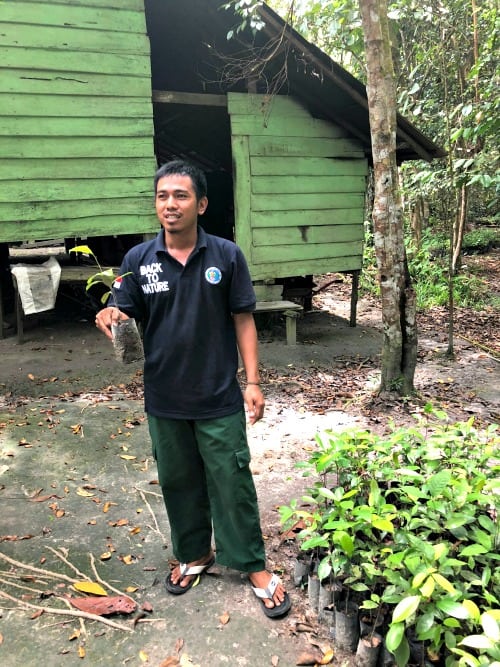
We really enjoyed our time here. We hiked through the jungle for about an hour. The park ranger showed us all the types of trees that they are planting in the reforestation. Most of them have significant uses in Western medicine.
Then, we got to choose which kinds of saplings we wanted to plant. We hiked another 15 minutes into the rainforest and started planting. It was a very small contribution to the rainforest, but it felt really good to be a part of this.

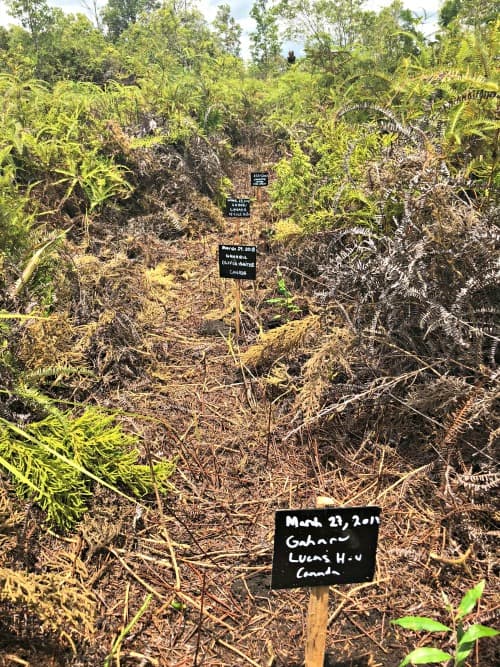
Visiting Songai Sekonyer Village
A short boat ride away from our lodge was the village of Songai Sekonyer. After visiting the last orangutan rehabilitation centre of the day, our guide took us there for a tour.

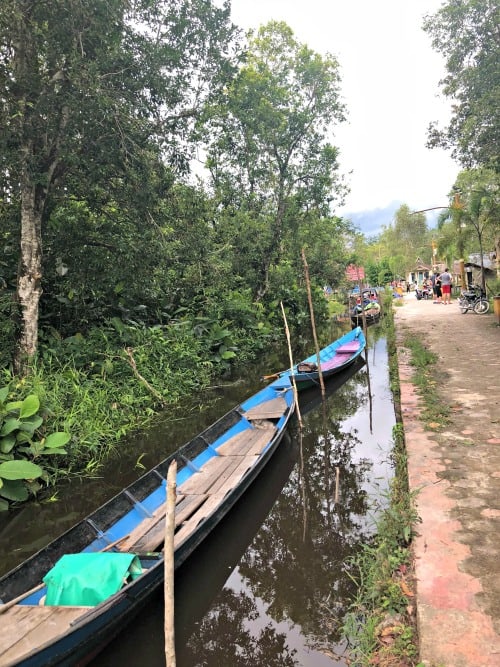
During our time in and around Tanjung Punting National Park, we barely saw any civilization except for the occasional tourist, the staff at the Lodge, and the park rangers at the various stops.
We boated up and down the rivers around the Park over four days, and only once saw a small collection of huts next to the shores. So we were very curious to see what this village would look like.
The village was a strange mix of modern life and very poor living conditions. One of the first things we saw as we left the dock and approached the village was a really nice large volleyball court filled with young men playing volleyball.
This ended up being the centre of town and it seemed like everyone was hanging out, watching the game, or chatting with friends. They were very friendly, dressed in western clothes, and many had smart phones.
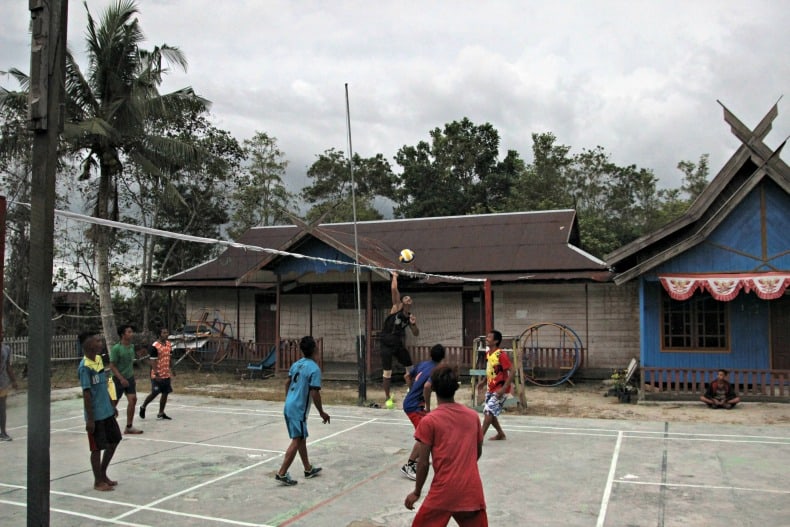
Living Conditions
However, as we walked through the village, we could see their difficult living circumstances. Some of the homes looked nice and solidly built, but more were ramshackle. All seemed to be virtually empty of rooms regardless of how they looked from the outside. In fact, they all seemed in very poor condition when we got glimpses of the interior.
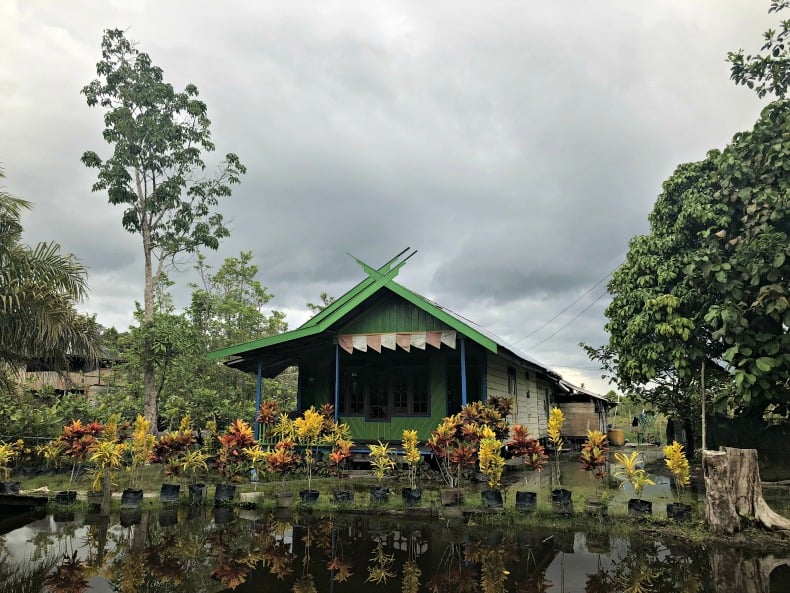
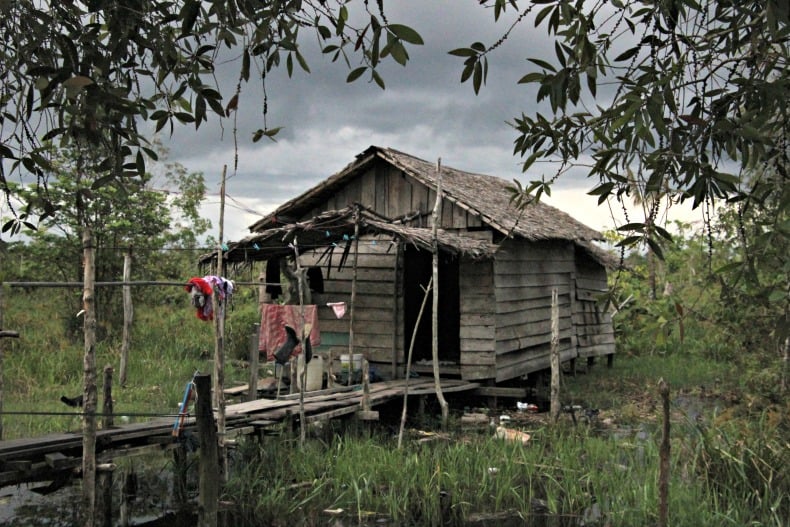
Because of the proximity to the river, they all were built over water, or had water all around them. The water seemed pretty dirty with garbage flowing through it, and yet, this is where the children swam and bathed. Many were having a great time covered in soap swimming around, but it was difficult to watch when the water seemed so clearly dirty.
Throughout the whole village, we saw one little store that sold a few shelf stable items, but really offered very little. It looked like a trip to the mainland would be necessary for significant supplies.
Dinner Surrounded By Lightning Bugs
On our last night, we headed out on our klotok around dusk about 30 minutes from our lodge. We anchored just next to shore near a large growth of plants called Nipah Palms. Once there, our crew began to set our table for dinner on the boat. By the time the food was served, it was pitched dark. There was no other man made light anywhere to be seen.
Then, the most magical thing happened. Thousands and thousands of lights began to glitter from lightning bugs that emerged from the plants and trees on the shore.
We ate dinner in the dark surrounded by these magical creatures. It was absolutely silent except for the sounds of the water, the occasional boat going by, and the lightning bugs. It was simply beautiful.
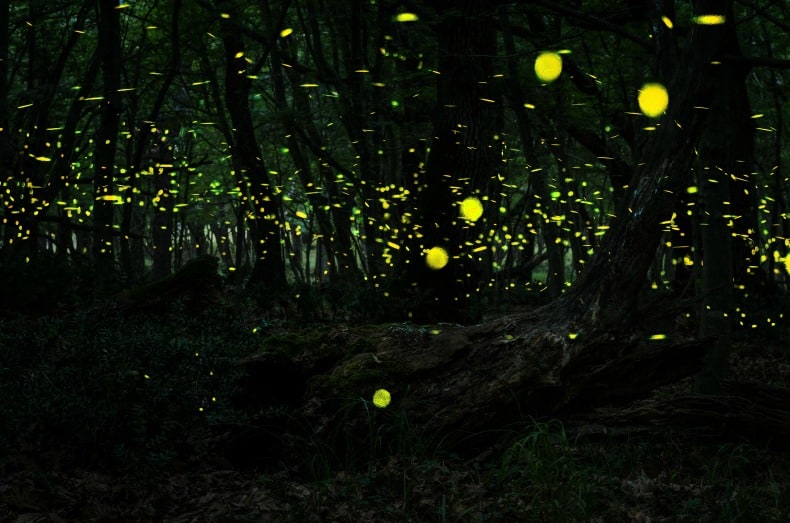
After dinner, my oldest son thought it was time to add some flair to the night. He got out his phone and began to play music. Much to the amusement of everyone, including the crew, this led to singing and dancing, initially by him, but soon by everyone, including the crew.
Our family of 6, in the middle of the Indonesian rainforest in Borneo, with orangutans, crocodiles, and other creatures nearby, danced and sang in the dark with lightning bugs circling all around us.
It doesn’t get much better than that.
What To Expect On Your Borneo Orangutan Getaway With Teens
Tanjung Punting National Park was very hot and humid. Ginormous bugs and insects were everywhere and they looked terrifying. However, I think they were pretty harmless (ha ha). The jungle was pristine, untouched and everywhere. In many places, it was impenetrable. When we walked deep into the jungles, the mosquitos were bad. We basically bathed in mosquito repellant every morning and thankfully, that did the trick.
We encountered friendly locals. Wildlife was everywhere and it was extraordinary. Encountering the orangutans whether from afar or up close was heart stopping and unforgettable.
Recommendations
- We wore short sleeve shirts and shorts for most of our time in Tanjung Punting National Park. It was very hot and humid. You may choose to wear long sleeve shirts and pants to help with the mosquitos. However, we used lots of mosquito repellant and that worked.
- You should wear closed toe shoes that are appropriate for walking in the jungle. We all wore running shoes and these worked well.
- Bring lots of mosquito repellant. We brought both a cream and a spray which worked out very well. We used the cream in the morning before we dressed and then, sprayed ourselves after we dressed.
- At Rimba Orangutan Ecolodge, you can choose to book a room and sleep at the Lodge or stay and sleep on the boat the whole time. We chose to sleep at the Lodge and were very happy with that choice. I loved spending the day on our boat exploring Tanjung Punting National Park, looking for wild life, and discovering orangutans. However, it offered very basic accommodations. In fact, at night, the crew simply laid out mattresses on top level of the boat. Accordingly, there was limited privacy, no relief from the heat and mosquitos, and no break from the crew. Nonetheless, if you like to camp, this would be a fantastic option.
Children
- There would be two areas of concern for bringing young children. My first concern would be that the majority of your time is spent on or near the water. The boat is large and very stable. However, there were lots of spots on the boats without any fencing and where small children could have easily fallen overboard.
- The second concern is whether your children would be mature and calm enough to be near orangutans or other wildlife. There is absolutely nothing between yourself and the orangutans on your adventure. One moment you could be walking in the jungle alone, and the next, an orangutan could be right in front of you. In addition, in many instances, you have to stay quiet and still for very long periods of time or you will scare the animals away.
Day 4: Leaving Kalimantan
We got up early and started our journey back to the airport. We cherished the last couple of hours on the boat watching the mischievous monkeys play as we left the jungle. We loved our time there. Four days was the perfect amount of time and we were all satisfied with our Borneo itinerary.
Last Word
We had a fantastic 4 day adventure with our teens in the Indonesian jungle of Borneo and trekking for orangutans. We loved watching these amazing creatures in their natural habitat. The other wildlife we discovered on our boat journeys was also extraordinary. Exploring the local village was very interesting, and learning about and planting trees were highlights. Ending our Borneo trip with our dinner surrounded by lightning bugs was truly a magical memory that we will always cherish.
Download my personally crafted 17 day Indonesia travel guide with my hotel and restaurant recommendations, tours and activities that I enjoyed.
If you would like to save this article for future use, please click on the “Save” button on one of the photos below. If you think someone else might find this article useful, please feel free to share it on your social media channels. Thanks!


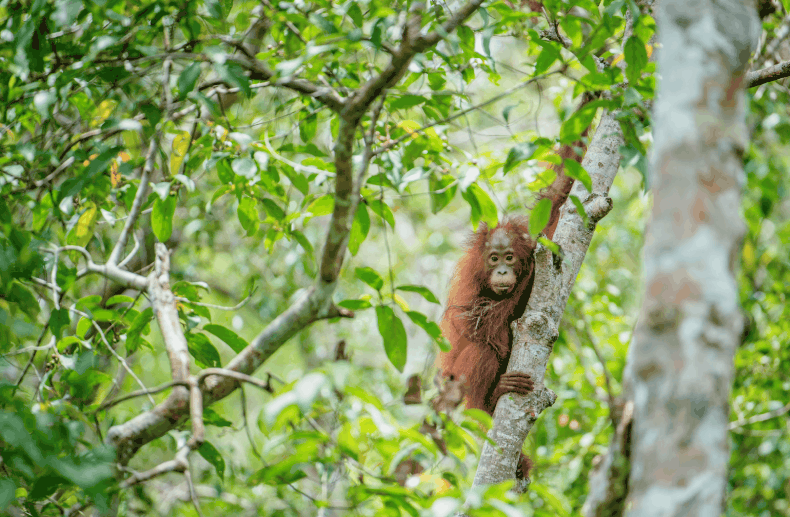


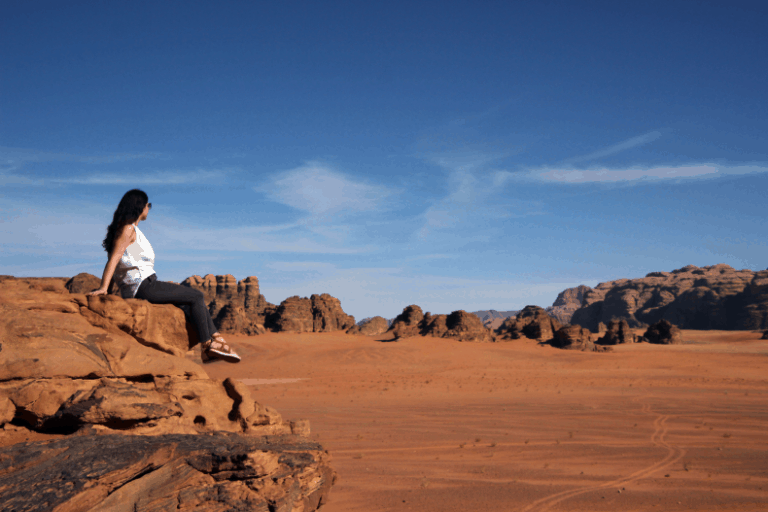

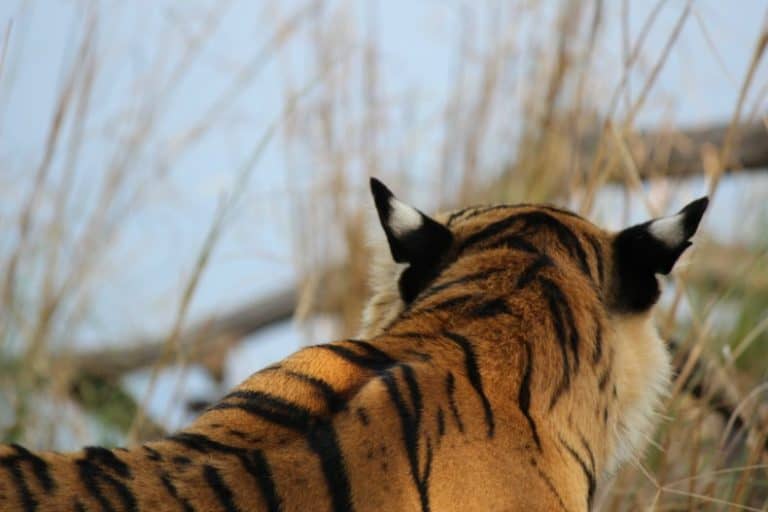

Wow! this is impressive.
Thank you!
What a fantastic trip. Beautiful wildlife and great photos. Definitely one to add to everyone’s bucket list.
Thanks Mark. It was a really special experience.
Wow! This seems like an awesome adventure, and something we’d love to do. Pinning for later. Thanks for sharing on #WeekendWanderlust!
It looks amazing. I have been to the island of Borneo, but we went to Brunei instead and did a river boat tour and cloud forest tour- much of the same things (except I think the part you went to had more orangutans!). Your kids are really lucky they got to do that!
I am fascinated with the idea of Brunei – this tiny country on this enormous island that is divided up into 3 countries. It must have been a really interesting experience.
Your eco-tour sounds amazing and very personalized. The crew to passenger ratio on the boat is impressive. It sounds like you were in the middle of all the wildlife with the monkeys jumping on your roof in the morning.
It was lovely. Even though we were in the middle of the jungle and surrounded by locals who had very difficult living conditions, the crew gave us amazing service and lots of great food.
A good advice to travel in the jungle
. Such an informative post you share that give me a plenty of courage to make my travel immediately. Here I am Get a full guideline to avoid anxiety. Thanks a lot, Ted for sharing amazing information
Good luck. I hope you enjoy yourself.
Orangutans are fascinating and I love that one if them snuck up behind you. I have only been to Malaysian Borneo and saw them at the Lok Kawi wildlife park in Sabah. Your adventure through the jungles sounds amazing, but I’m glad you had a guide with you.
Yes, you are right. I can’t imagine doing any of this without guides. However, I don’t think that there is anyway you could do what we did without a guide. Tanjung Punting is completely remote – the only way to access it is by boat.
I have always been fascinated by the jungles and their different life. I feel as urban dwellers, we move farther away from sense-provoking habitat that a jungle provides. Just imagine waking up to various sounds in the morning that would make a beautiful day ahead! In a similar vein, Indonesian jungles provide an alluring habitat! Thank you a descriptive post!
You are welcome. I totally agree. I love the sounds of nature and love it when we find ourselves in jungles.
Borneo is so full of lush nature – I am Malaysian myself so I have been to Eastern Malaysia and I guess its very similar. I would very much like to do the river boat. I used it once in the Dominican Republic and it was awesome to spot wildlife from it. I too love the monkeys and especially the Orangutan. Thanks for sharing.
I was very tempted to go see the orangtuans in Malaysia but in the end, it made more sense to see them in Indonesia. I agree – I love exploring nature on a boat. You get to see so much without interfering too much in the natural surroundings.